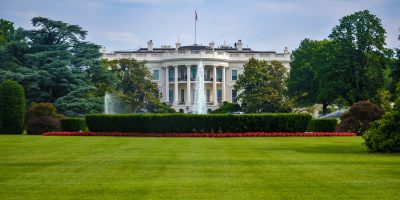Digital Transformation of Portugal: How Politics is Changing Citizens’ Habits?
Over the last decade, Portugal has become a leader in digitalization in Southern Europe, affecting all areas of life, from government services to citizens’ habits. The government is implementing electronic services, developing remote work infrastructure, and tightening digital market regulations.
Political decisions directly influence online behavior, especially in the online leisure sector. While authorities discuss new taxes and laws, millions of users are engaging in virtual games, betting, and other forms of digital entertainment.
The State and Digital Economy: New Rules of the Game
Portuguese authorities are balancing innovation support with consumer protection. A key measure is the “digital tax” on international services, introduced in 2023, imposing a 6% tax on subscriptions to platforms like Netflix, Spotify, and Amazon Prime.
This has led to mixed reactions. While the tax generated 28 million euros for digital infrastructure, many users have turned to alternative, often pirated, platforms. A Universidade Nova de Lisboa study found illegal streaming subscriptions increased by 17% post-tax.
Discussions also focus on online casino and betting regulation. The National Gambling Agency (SRIJ) has increased requirements for licensed operators, mandating strict age verification and user identification. Non-compliance can result in fines up to 500,000 euros.
Portugal’s digital transformation has even affected the leisure sector. While the authorities are working on new subscription tax laws, thousands of Portuguese people are exploring casino online a dinheiro real — a market that grew by 40% after the pandemic.
The Phenomenon of Online Entertainment: Why Do Portuguese People Choose Digital Leisure?
The COVID-19 pandemic became a catalyst for the boom in digital entertainment. During lockdowns, people, confined to their homes, turned to online games and betting as a way to socialize and experience thrills. But surprisingly, even after restrictions were lifted, this habit persisted.
Key Statistics:
- Portuguese people now spend 2.5 times more time on online games and betting than five years ago.
- According to a Marktest report, around 32% of citizens aged 18-35 have placed bets or played in online casinos in the past year.
- Of these, 15% do so regularly — at least once a week.
Interestingly, while the state is limiting gambling, it is also indirectly stimulating its popularity. A prime example is the “Digital Nomads” program, which attracts foreign IT specialists to the country. Many of them use VPNs to access international gaming platforms, and locals are adopting this practice as well.
Technological Progress and Legislative Regulation
The development of 5G networks and the expansion of high-speed internet coverage in rural areas create new opportunities for digital entertainment. According to ANACOM, by 2023, 78% of the country’s territory had access to the internet at speeds above 100 Mbps. This is significantly higher than the European average.
However, legislation is not always keeping up with technology. For instance, popular games with gambling elements are still in a regulatory gray area. Experts from Universidade do Porto warn that this may lead to new forms of gambling addiction among teenagers.
Security vs. Freedom: What Awaits Users?
The European Union is developing new directives on data protection and financial security, requiring Portugal, as a member, to adapt its legislation. Expected changes include:
- Stricter age checks for games and betting, with biometric identification required on all platforms by 2024.
- Significant restrictions on gambling advertising on social media and TV, with pilot projects already underway in several regions.
- Gambling addiction to be included in the list of diseases covered by the national healthcare system.
Despite a 40% increase in gambling addiction cases over the past three years, experts warn that these measures could push users toward unregistered sites, potentially fueling the shadow market.
Social Consequences of Digital Transformation
The digitalization of leisure has not only economic but also profound social consequences. Sociologists from the University of Lisbon note several alarming trends:
- A decline in face-to-face communication among young people. 65% of those surveyed aged 18-25 prefer online interactions to real meetings.
- Growth in social inequality. Access to paid digital entertainment is mostly available to urban residents and wealthier social groups.
- A change in the structure of free time. The average Portuguese now spends 4.5 hours a day on digital entertainment, 2 hours more than ten years ago.
Future Prospects: What Lies Ahead?
The digital entertainment market is transforming through three key trends:
- VR Technologies & Metaverses: By 2025, one in three Portuguese gamers is expected to regularly use VR devices, driven by 5G and government investments in digital tourism.
- Blockchain & NFT Games: The regulatory framework is evolving, with the Ministry of Economy preparing national standards for NFT games, though digital asset taxation remains under debate with the EU.
- AI & Content Personalization: Portuguese startups are experimenting with AI, and adaptive algorithms being tested in Lisbon’s tech parks could revolutionize content personalization, including for licensed online casinos.
These advancements are outpacing legislative regulation.
Conclusion: Digital Transformation as a New Reality
Portugal is at the intersection of technology, politics, and habits. While the state attempts to control the digital environment, users are ahead. Online entertainment, especially gambling, reflects these shifts. The future will reveal whether Portugal can balance technological progress with social responsibility, ensuring its place as a leader in European digitalization.


